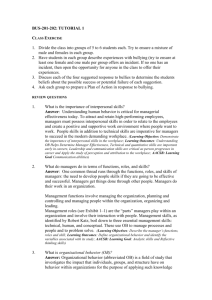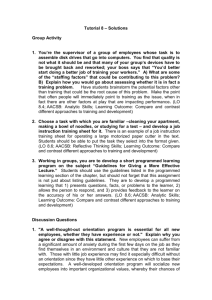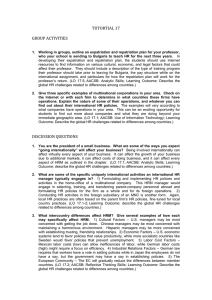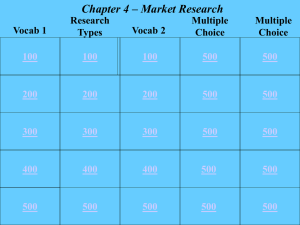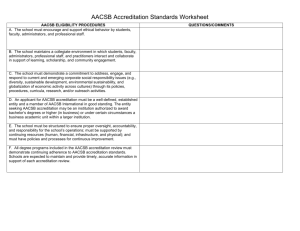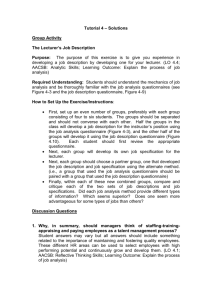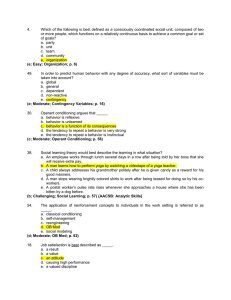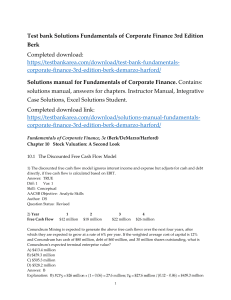FREE Sample Here
advertisement
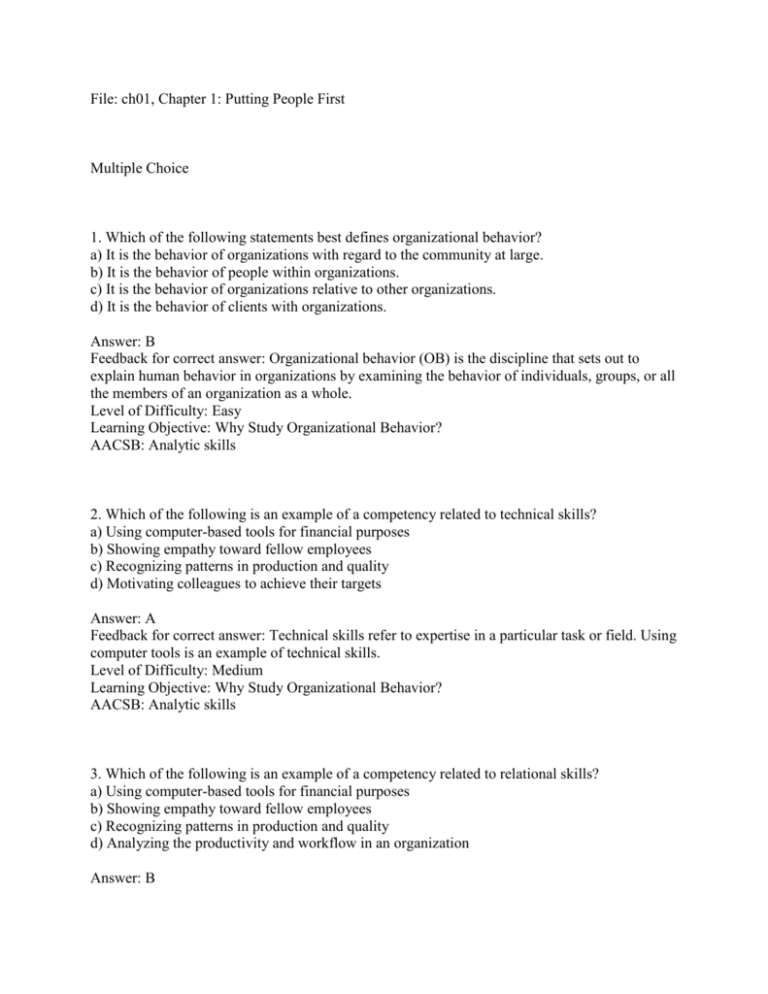
File: ch01, Chapter 1: Putting People First Multiple Choice 1. Which of the following statements best defines organizational behavior? a) It is the behavior of organizations with regard to the community at large. b) It is the behavior of people within organizations. c) It is the behavior of organizations relative to other organizations. d) It is the behavior of clients with organizations. Answer: B Feedback for correct answer: Organizational behavior (OB) is the discipline that sets out to explain human behavior in organizations by examining the behavior of individuals, groups, or all the members of an organization as a whole. Level of Difficulty: Easy Learning Objective: Why Study Organizational Behavior? AACSB: Analytic skills 2. Which of the following is an example of a competency related to technical skills? a) Using computer-based tools for financial purposes b) Showing empathy toward fellow employees c) Recognizing patterns in production and quality d) Motivating colleagues to achieve their targets Answer: A Feedback for correct answer: Technical skills refer to expertise in a particular task or field. Using computer tools is an example of technical skills. Level of Difficulty: Medium Learning Objective: Why Study Organizational Behavior? AACSB: Analytic skills 3. Which of the following is an example of a competency related to relational skills? a) Using computer-based tools for financial purposes b) Showing empathy toward fellow employees c) Recognizing patterns in production and quality d) Analyzing the productivity and workflow in an organization Answer: B Feedback for correct answer: Relational skills are talents for getting along with and motivating people. Level of Difficulty: Medium Learning Objective: Why Study Organizational Behavior? AACSB: Analytic skills 4. Which of the following is an example of a competency related to conceptual skills? a) Using computer-based tools for financial purposes b) Showing empathy toward fellow employees c) Understanding complex issues and analyzing them d) Motivating employees to work in a team Answer: C Feedback for correct answer: Conceptual skills refer to the capability to understand complex issues and underlying causes and to solve problems with broad implications. Level of Difficulty: Medium Learning Objective: Why Study Organizational Behavior? AACSB: Analytic skills 5. What are conceptual skills? a) They are the skills that managers use to understand complex issues and its underlying causes. b) They are the skills related to the capacity to work well with other people both individually and in a group. c) They are the skills that managers use to motivate people to work effectively in a team. d) They are the skills involved in making choices in an organization. Answer: A Feedback for correct answer: Conceptual skills refer to the capability to understand complex issues and underlying causes and to solve problems with broad implications. Level of Difficulty: Easy Learning Objective: Why Study Organizational Behavior? AACSB: Analytic skills 6. Which of the following statements is an example of a manager’s conceptual skills? a) The ability to empathize with one’s team members and colleagues. b) The ability to motivate employees to work effectively in a team. c) The ability to connect and interact with team members. d) The ability to visualize problems and its implications in a broader perspective. Answer: D Feedback for correct answer: Conceptual skills refer to the capability to understand complex issues and underlying causes and to solve problems with broad implications. Level of Difficulty: Medium Learning Objective: Why Study Organizational Behavior? AACSB: Analytic skills 7. Which of the following is an example of the planning management function? a) Dealing with employee behavior issues b) Determining how tasks are to be grouped c) Devising and establishing strategies for achieving goals d) Monitoring tasks on a regular basis Answer: C Feedback for correct answer: From a conventional perspective, planning focuses on how managers set goals and design strategies to achieve them. Level of Difficulty: Medium Learning Objective: Organizational Behavior and Management AACSB: Dynamics of the global economy 8. Which of the following is an example of the organizing management function? a) Dealing with employee behavior issues b) Determining how tasks are to be grouped c) Devising and establishing strategies for achieving goals d) Monitoring tasks on a regular basis Answer: B Feedback for correct answer: From a conventional perspective, organizing is arranging human and other organizational resources in order to achieve planned goals and strategies. Level of Difficulty: Medium Learning Objective: Organizational Behavior and Management AACSB: Dynamics of the global economy 9. In which of the following scenarios is the supervisor performing the planning management function? a) Tracy, the marketing chief of a leading piston manufacturer, formulates objectives and targets for the marketing department to achieve over the next financial quarter. b) Robert, a senior project manager in a software company, motivates and encourages his team members to improve the quality of the project they are working on. c) Harold, a quality supervisor at a phone manufacturing facility, gives regular feedback to workers on the defects found in the components produced and information on how to prevent them. d) Patricia, the supervisor at a cheese processing plant, decides the work hours for all the employees on the production floor for the next two months. Answer: A Feedback for correct answer: From a conventional perspective, planning focuses on how managers set goals and design strategies to achieve them. Typically the focus is on how managers plan to improve productivity and profits. Level of Difficulty: Hard Learning Objective: Organizational Behavior and Management AACSB: Reflective thinking skills 10. In which of the following scenarios is the supervisor performing the organizing management function? a) Tracy, the marketing chief of a leading piston manufacturer, formulates objectives and targets for the marketing department to achieve over the next financial quarter. b) Robert, a senior project manager in a software company, motivates and encourages his team members to improve the quality of the project they are working on. c) Harold, a quality supervisor at a phone manufacturing facility, gives regular feedback to workers on the defects found in the components produced and information on how to prevent them. d) Patricia, the supervisor at a cheese processing plant, decides the work hours for all the employees on the production floor for the next two months. Answer: D Feedback for correct answer: From a conventional perspective, organizing is arranging human and other organizational resources in order to achieve planned goals and strategies. Basic organizing issues include concepts such as centralization (how much authority people at different organizational levels have), specialization (dividing large, complex tasks into a series of simpler tasks), and standardization (achieving coordination across organizational members). Level of Difficulty: Hard Learning Objective: Organizational Behavior and Management AACSB: Reflective thinking skills

